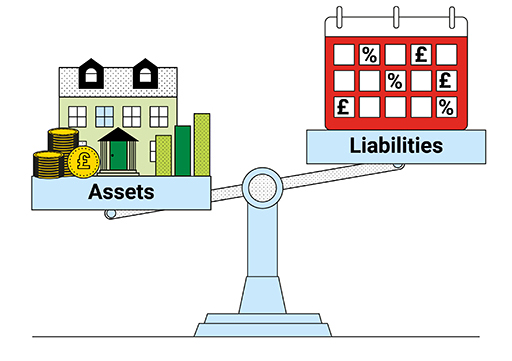3 Your assets and liabilities
Activity 1 put the spotlight on how well your income covers household spending.
But there’s a further important measure of your financial wellbeing – the balance of your assets and liabilities. We can call it your wealth score and it’s easy to calculate.
Activity 2: Working out your wealth score
- First add up all your debts. That can include anything from smaller ones like credit card debts or overdrafts to bigger ones like car loans and mortgages. You’ll be able to get the current balance of these online via your lenders’ web sites. Alternatively just use the most recent statements.
- Then add up all your assets. That includes all the money in your bank and savings accounts, and any other investments too like investment policies or company shares you own. If you own your home, add in its estimated value. Do not include the value of your pension schemes in this calculation.
- You can add other items too provided they are marketable - for example jewellery - if you place cautious valuations on these.
- Subtract your liabilities from your assets – that’s your net wealth
- Finally, divide your assets by your debts. So for example, if you have assets of £250,000 and debts of £125,000, divide £250,000 by £125,000 to get 2. This shows how many times your assets cover your liabilities. We can call this your wealth score.
This number is one measure of your financial wellbeing. Combined with your findings from the earlier budgeting activity they tell you how financially secure or vulnerable you are.
Discussion
What is your net wealth and your wealth score?
The higher they are, the more secure you are.
If the wealth score is comfortably above 1, you’re reasonably well placed. As you move through your 40s and 50s the score should rise - mainly because you’re likely to be repaying money that you’ve borrowed. But if it’s under 1, you probably need to take steps to build up your financial security - for example by looking at what plans you have for paying off your debts and when you expect these to be repaid.
Next, we turn to some further check-ups on your current financial position and look at how holding short-term assets, like money in a savings account, makes you less vulnerable to financial shocks.

